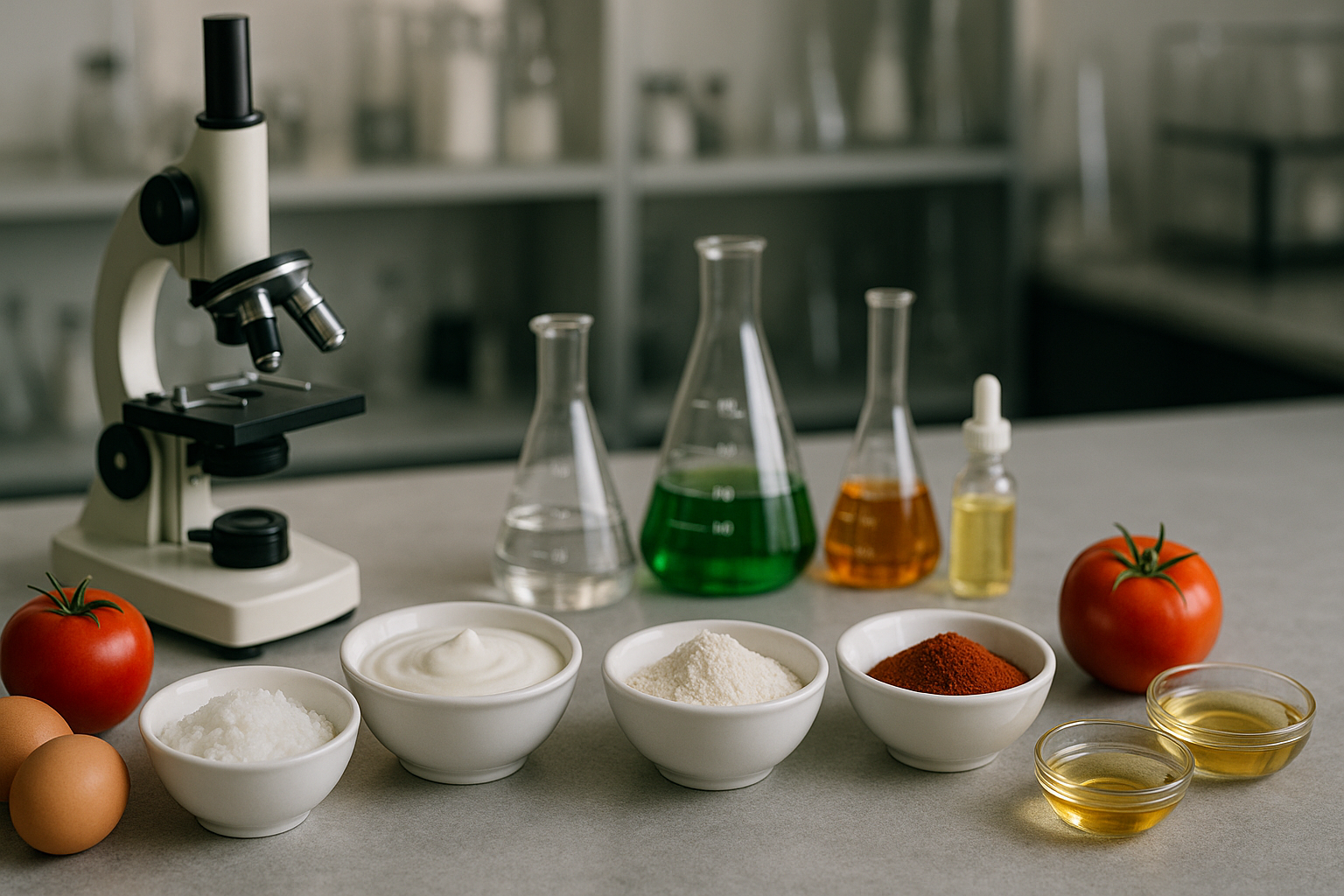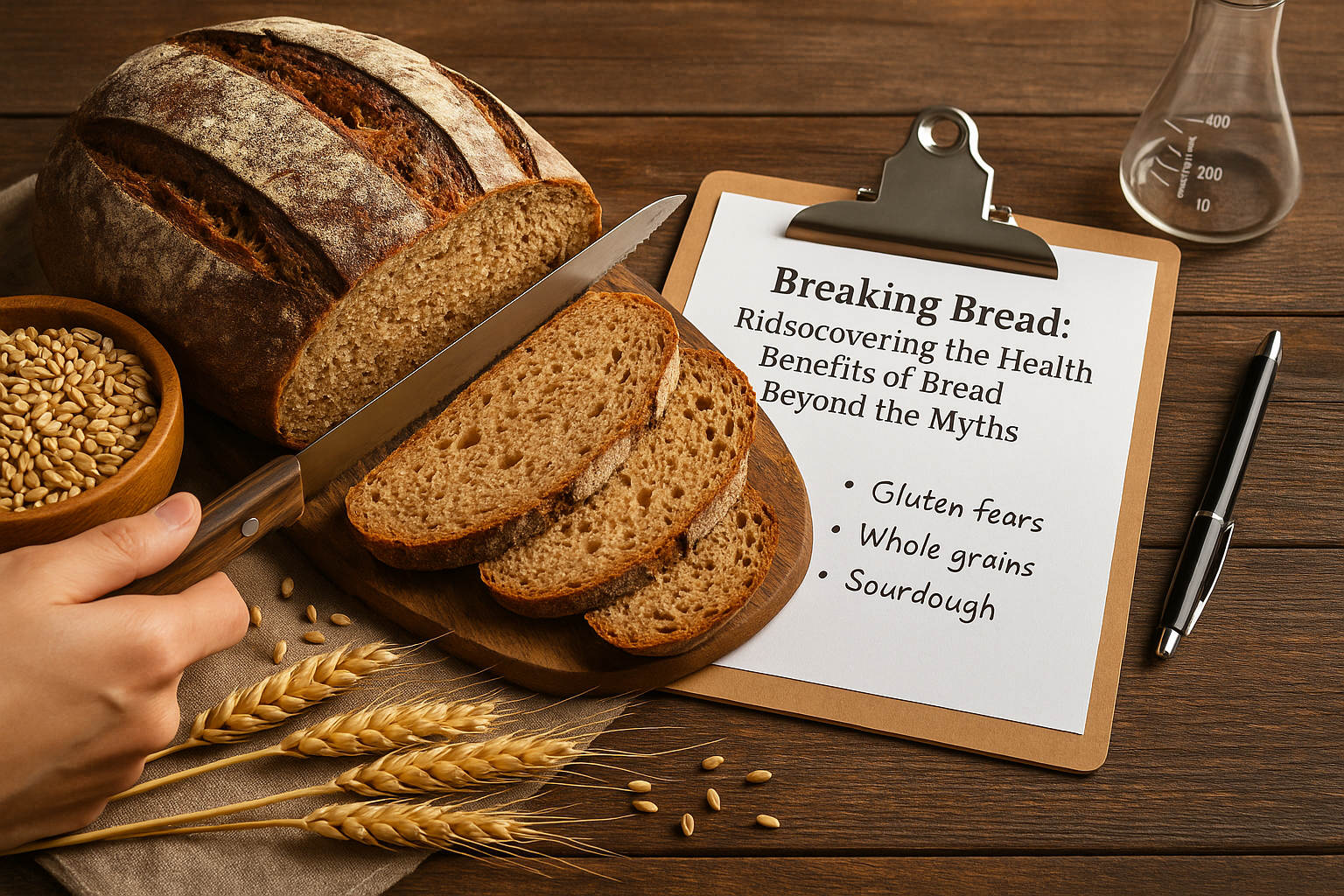
Unraveling the Secret: How do Hydrocolloids Affect Food Elasticity?
SUBSCRIBE TO OUR BLOG
Promotions, new products, and recipes.
Food texture is a critical aspect of the culinary experience, and professional chefs and food manufacturers alike understand the importance of creating products with the perfect consistency. Hydrocolloids, a class of food additives that includes substances such as pectin, carrageenan, and xanthan gum, play a crucial role in achieving the desired texture and elasticity in various food products.
In this section, we will explore the fascinating world of hydrocolloids and their impact on the elasticity of food. We will delve into the science behind how hydrocolloids influence the texture and consistency of various food products. We will discuss the important role of hydrocolloids in achieving the perfect texture and mouthfeel in food, and examine how they interact with other ingredients to produce the desired results.
Key Takeaways:
- Hydrocolloids are a class of food additives that play a critical role in determining the texture and consistency of various food products.
- Hydrocolloids interact with other ingredients in food to create the perfect texture and mouthfeel.
- Understanding the science behind hydrocolloids is crucial for achieving the desired results in food production.
- Hydrocolloids contribute to achieving the perfect texture in various food products such as baked goods, dairy, and sauces.
- Exploring the future advancements in the use of hydrocolloids promises exciting innovations in food texture and consistency.
Understanding Hydrocolloids and Their Function in Food
Hydrocolloids are a group of polymers that have the ability to bind with water to form a gel-like substance. They are commonly used in the food industry for their unique characteristics that contribute to food texture and consistency. Hydrocolloids play a vital role in maintaining the desired consistency of various food products, such as sauces, dressings, and desserts. Their properties also make them useful in improving the texture and appearance of baked goods, dairy products, and meat products.
The use of hydrocolloids in food products is dependent on their interaction with water and other food components. The addition of hydrocolloids can change the rheological properties of food, such as its viscosity, elasticity, and flow. Their impact on food consistency is also significant, imparting a specific mouthfeel and texture.
There are various hydrocolloids commonly used in the food industry, such as xanthan gum, carrageenan, and guar gum. These hydrocolloids have unique characteristics that make them suitable for different food applications. For instance, carrageenan is often used in dairy products, while xanthan gum is commonly used in salad dressings.
Overall, hydrocolloids are important ingredients in the food industry that allow manufacturers to achieve the desired texture and consistency of food products. Their influence on food rheology makes them valuable in many food applications, and their continued use in food innovation promises exciting possibilities in texture manipulation and food experiences.
Hydrocolloids and Food Structure
Hydrocolloids play a crucial role in the structure of various food products, contributing to their texture, consistency, and overall quality. By forming gels, hydrocolloids help to stabilize food products, preventing separation and maintaining desired consistency over time. In addition, hydrocolloids are also capable of modifying the structure of food on a molecular level, influencing its rheological properties.
One of the most significant effects of hydrocolloids on food structure is their impact on gelation. Hydrocolloids have the ability to form gels in food, depending on their concentration and the presence of other food components. The process of gelation is complex, involving the formation of a network of fibers that hold together the liquid component of the food. This network gives the food its characteristic texture and mouthfeel.
Furthermore, hydrocolloids can also influence the water-binding capacity of food, affecting its hydration and swelling properties. This can result in changes in the texture and structure of food products. Hydrocolloids can be used to create products with a range of textures, from firm and gel-like to soft and spongy.
Examples of hydrocolloids commonly used for food structure modification include carrageenan, agar-agar, and xanthan gum. Carrageenan, for instance, is frequently used in dairy products and meat products to improve their texture and stability. Agar-agar is often used in desserts and jellies, lending them a firm, gel-like texture. Xanthan gum, on the other hand, is often added to salad dressings and sauces to improve their viscosity and mouthfeel.
Overall, the effects of hydrocolloids on food structure are complex and multifaceted. By modifying the rheological properties of food, hydrocolloids can create unique textures and improve the overall quality of food products.
Hydrocolloids and Food Thickening
One of the primary functions of hydrocolloids in food production is thickening. Hydrocolloids help increase the viscosity of various food products, providing a desired texture and mouthfeel.
There are a variety of hydrocolloids that can be used to achieve thickening, including pectin, carrageenan, xanthan gum, and guar gum. Each of these hydrocolloids has different properties and is suitable for different types of applications.
Pectin, for example, is commonly used in jams and jellies due to its ability to form strong gels with sugar and acid. Carrageenan, on the other hand, is often used in dairy products such as ice cream and yogurt to stabilize emulsions and prevent ice crystal formation.
Xanthan gum is another popular hydrocolloid known for its thickening properties, with a particular affinity for oil-based products. It also helps to prevent syneresis and improve mouthfeel in sauces and dressings. Guar gum is commonly used in gluten-free baking to provide structure and binding in the absence of gluten.
It's important to note that while hydrocolloids can be highly effective in thickening food products, it's necessary to carefully control the dosage to avoid over-thickening and creating an undesirable texture.
Hydrocolloids and Food Stabilization
Hydrocolloids are essential in the stabilization of various food products. They are used to prevent phase separation and maintain the desired texture and consistency of the final product.
The most common hydrocolloids used in food stabilization include xanthan gum, carrageenan, and guar gum. These hydrocolloids form a stable network that holds the water and food molecules together, preventing them from separating.
One of the major benefits of using hydrocolloids for food stabilization is that they can improve the shelf life of the product. By preventing phase separation, hydrocolloids can keep the food stable for a longer time, reducing spoilage and waste.
However, it's important to note that the effectiveness of hydrocolloids in food stabilization can be affected by factors such as pH, temperature, and processing techniques. It's crucial to carefully consider these factors when using hydrocolloids in food production to ensure optimal results.
The Science Behind Hydrocolloids' Impact on Food Elasticity
Hydrocolloids affect food consistency and texture through several mechanisms. One of the primary ways hydrocolloids influence food elasticity is through their water binding capacity. Hydrocolloids absorb water and form gels, which can contribute to the overall texture and structure of a food product.
Gel formation is another key factor in how hydrocolloids influence food elasticity. The formation of a gel network within a food can provide stiffness and elasticity, affecting the textural properties of the product. The strength and extent of gelation can vary depending on the type of hydrocolloid used, the concentration, and the processing conditions.
Hydrocolloids can also interact with other food components, such as proteins and starches. These interactions can impact the ability of these ingredients to form gels, which in turn affects the overall texture and consistency of the final product. Additionally, hydrocolloids can contribute to the prevention of syneresis or the separation of liquid from a gel or solid, helping maintain product stability over time.
The complex mechanisms by which hydrocolloids affect food elasticity require careful consideration in their use in food production. Understanding the science behind hydrocolloids' impact on food texture and structure is essential in creating unique and desirable food experiences.
Examples of Hydrocolloid Use in Food Products
Hydrocolloids are ubiquitous in the food industry and are used to modify and optimize the properties of a wide variety of food products. From baked goods to sauces, hydrocolloids play a crucial role in determining the texture and consistency of many foods.
One of the most common applications of hydrocolloids is in baked goods. Hydrocolloids such as guar gum, xanthan gum, and carrageenan are often used as emulsifiers, stabilizers, and thickeners in bread, cakes, and pastry products. These hydrocolloids help to maintain a stable dough structure, while also improving the shelf life and texture of the end product.
In dairy products, hydrocolloids are often used to create a smooth and creamy texture. For example, alginate is used in the production of low-fat yogurts to mimic the mouthfeel and creaminess of full-fat versions. Similarly, pectin is used in the production of jams and jellies to create a firm texture and prevent separation of the fruit and juice.
Hydrocolloids are also commonly used in the production of sauces and dressings. Xanthan gum, for example, is often used to prevent separation and maintain a smooth and consistent texture in salad dressings and mayonnaise. Carrageenan is used to stabilize chocolate milk and ensure that the chocolate particles are evenly dispersed throughout the product.
Overall, the use of hydrocolloids in food products is essential for achieving the desired texture and consistency. By leveraging the unique properties of these agents, food manufacturers can create products that are both visually appealing and satisfying to consume.
The Future of Hydrocolloids in Food Innovation
As food producers continue to experiment with new textures and consistencies, hydrocolloids are poised to play an increasingly important role in food innovation. With their ability to contribute to gel formation, thickening, and stabilization, hydrocolloids offer endless possibilities for creating unique and exciting food experiences.
One emerging trend in the use of hydrocolloids is the development of plant-based alternatives to traditional animal-based proteins. As consumers become more environmentally conscious, there is an increasing demand for plant-based products that offer a comparable texture and mouthfeel to their meat and dairy counterparts. Hydrocolloids such as carrageenan, agar, and locust bean gum can help create the desired texture and consistency in plant-based products, making them a promising alternative to animal-derived ingredients.
Another area of potential innovation lies in the use of hydrocolloids in 3D food printing. By using hydrocolloids to control the texture and structure of printed foods, researchers are exploring new possibilities for creating personalized and nutritious meals. For example, hydrocolloids can be used to develop printed foods that melt in the mouth or offer a crunchy texture, creating a new world of possibilities for food customization.
As the food industry continues to evolve, hydrocolloids will undoubtedly play a crucial role in shaping the future of food innovation. By leveraging their unique properties to create novel textures, structures, and consistencies, hydrocolloids will continue to transform the way we think about and experience food.
Challenges and Considerations in Working with Hydrocolloids
While hydrocolloids offer a plethora of benefits in food production, there are also some challenges and considerations to keep in mind when working with them.
Firstly, the dosage of hydrocolloids must be carefully controlled to prevent over-thickening or other unwanted effects. Different hydrocolloids have different optimal dosage ranges, and exceeding them can lead to a loss of texture and mouthfeel.
Compatibility with other ingredients is also an important factor to consider. Some hydrocolloids may interact with other components in a recipe, leading to unintended outcomes or even complete failure of the product.
Another consideration is the potential for interactions with processing techniques. For example, some hydrocolloids may be sensitive to temperature or pH, and changes in these factors during processing can affect their functionality.
Lastly, it's important to note that not all hydrocolloids are created equal. Different hydrocolloids have different properties and functionalities, and selecting the right one for a particular application is crucial for achieving the desired texture and consistency.
By being mindful of these challenges and considerations, food manufacturers and chefs can harness the power of hydrocolloids to create delicious and innovative food products that are sure to satisfy.
Conclusion
In conclusion, this deep dive into hydrocolloids and their impact on food elasticity has revealed the intricate science behind texture manipulation. By understanding how hydrocolloids influence food structure, thickening, stabilization, and more, we can unlock endless possibilities in creating unique and satisfying food experiences. The continuous innovation in this field promises exciting advancements in the future, expanding the boundaries of what we can achieve in terms of food texture and consistency.
Hydrocolloids are vital ingredients in modern food production, playing a crucial role in determining the texture and consistency of a wide variety of food products. Their impact on food texture cannot be overstated, and their use has become increasingly prevalent in recent years, as food manufacturers seek to create unique and innovative products that meet changing consumer demands.
While hydrocolloids offer many benefits, they also present some challenges and considerations that must be taken into account when working with them. Dosage, compatibility with other ingredients, and potential interactions with processing techniques are all important factors to consider when using hydrocolloids in food production.
The Future of Hydrocolloids in Food Innovation
The continuous innovation in this field promises exciting advancements in the future, expanding the boundaries of what we can achieve in terms of food texture and consistency. Hydrocolloids are already widely used in the food industry, but their potential for creating unique and satisfying food experiences remains largely untapped. Emerging trends and technologies are leveraging hydrocolloids to create new, innovative textures, and the future promises even more exciting developments in this field.
In summary, hydrocolloids remain a vital component of modern food production, and their impact on food texture and consistency cannot be overstated. By understanding their functions and properties, food manufacturers can continue to unlock endless possibilities in creating unique and innovative food products that meet changing consumer demands.
FAQ
How do hydrocolloids affect food elasticity?
Hydrocolloids have the ability to influence the elasticity of food by interacting with water molecules and forming a gel-like structure. This gel network helps to maintain the desired texture and consistency in various food products.
What is the role of hydrocolloids in food consistency?
Hydrocolloids play a crucial role in maintaining the consistency of food by providing viscosity and controlling fluid movement. They help to prevent phase separation and ensure a smooth and stable texture in food products.
How do hydrocolloids impact food rheology?
Hydrocolloids affect food rheology by altering its flow behavior and viscosity. They can increase or decrease the thickness of food, depending on the specific hydrocolloid and its concentration used in the formulation.
What are the effects of hydrocolloids on food structure?
Hydrocolloids contribute to the formation of gels in food, which gives structure and stability. They help to create a desirable texture and prevent syneresis or the release of liquid from the food matrix.
How do hydrocolloids thicken food?
Hydrocolloids thicken food by absorbing and binding water molecules, increasing the viscosity of the mixture. They provide the desired thickness and mouthfeel in various food products, such as sauces, soups, and dressings.
What is the role of hydrocolloids in food stabilization?
Hydrocolloids contribute to food stabilization by preventing phase separation and maintaining the desired consistency over time. They help to stabilize emulsions, suspensions, and other food systems, ensuring a uniform texture and preventing spoilage.
How do hydrocolloids affect food elasticity at a scientific level?
Hydrocolloids influence food elasticity through mechanisms such as water binding, gel formation, and interaction with other food components. These interactions create a network that provides structure and elasticity to the food matrix.
In which food products are hydrocolloids commonly used to impact texture?
Hydrocolloids are commonly used in various food products, including baked goods, dairy products, sauces, and desserts. They play a crucial role in determining the texture and consistency of these products.
What does the future hold for hydrocolloids in food innovation?
The use of hydrocolloids in food innovation is expected to continue growing. Advancements in technology and research will likely lead to new applications and opportunities to create unique textures and experiences in the food industry.
What are the challenges and considerations when working with hydrocolloids in food production?
Working with hydrocolloids in food production can present challenges such as finding the optimal dosage, ensuring compatibility with other ingredients, and understanding potential interactions with processing techniques. It is important to carefully consider these factors to achieve the desired texture and stability in the final product.
Comments, please:
We would apprecaite hearing from you. Please add your comments below. We will reply to them.
See: The Hydrocolloid Glossary
For further reading:Unraveling the Secret: How do Hydrocolloids Affect Food Elasticity?

About the Editor
About the Chef Edmund: Chef Edmund is the Founder of Cape Crystal Brands and EnvironMolds. He is the author of several non-fiction “How-to” books, past publisher of the ArtMolds Journal Magazine and six cookbooks available for download on this site. He lives and breathes his food blogs as both writer and editor. You can follow him on Twitter and Linkedin.


|
About the Author Ed is the founder of Cape Crystal Brands, editor of the Beginner’s Guide to Hydrocolloids, and a passionate advocate for making food science accessible to all. Discover premium ingredients, expert resources, and free formulation tools at capecrystalbrands.com/tools. — Ed |
Enjoyed this post? Subscribe to The Crystal Scoop
Food-science tips, ingredient know-how, and recipes. No spam—unsubscribe anytime.
- Choosing a selection results in a full page refresh.



